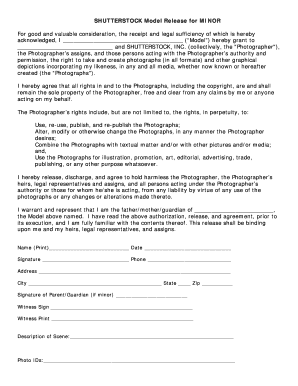Thinking about turning your photography hobby into a steady income stream? Selling stock photos on Shutterstock might just be your best move! It’s a popular platform where photographers and artists can showcase their work and earn money whenever someone downloads their images. Whether you’re a seasoned pro or just starting out, understanding how the process works can make all the difference. In this guide, we’ll walk through what you need to know to succeed on Shutterstock — from setting up your account to maximizing your photo sales. Ready to dive in and start earning from your creativity? Let’s go!
Understanding Shutterstock’s Platform and Submission Guidelines

Before you upload your photos, it’s crucial to understand how Shutterstock’s platform operates and what their submission guidelines entail. This not only helps you avoid rejections but also ensures your images meet the quality standards expected by buyers worldwide.
How Shutterstock’s Platform Works
Shutterstock functions as a marketplace connecting contributors (like you) with buyers looking for high-quality images, vectors, and footage. As a contributor, you can upload your work through their contributor portal. Once your images are approved, they become available for download, and you earn a commission whenever someone licenses your work. The platform also offers tools for tracking your earnings, managing your portfolio, and analyzing what types of images sell best.
Submission Guidelines: What You Need to Know
To get your images approved, they must adhere to Shutterstock’s strict standards:
- Image Quality: Photos should be sharp, well-exposed, and free of noise or artifacts. Avoid overly processed images unless they fit a specific style.
- File Format and Size: Upload images in JPEG format with a minimum of 4 megapixels. Larger files are preferred, as they offer more flexibility for buyers.
- Model and Property Releases: If your images feature recognizable people or private property, you must provide proper releases to avoid copyright or privacy issues.
- Content Restrictions: Shutterstock has a list of prohibited content, including illegal activities, hate speech, and explicit material. Make sure your images comply!
- Metadata: Accurate titles, descriptions, and keywords are essential. They help buyers find your images easily and improve your chances of sales.
Review and Approval Process
After submitting your images, they go through an approval process where Shutterstock’s review team checks for quality, originality, and compliance with guidelines. This process usually takes a few days, but it can be longer during busy periods. If your images are rejected, don’t get discouraged! Review the feedback, make necessary adjustments, and try again. Consistency, attention to detail, and understanding the platform’s standards will help you build a successful portfolio over time.
Tips for Creating High-Quality and Marketable Stock Photos

Creating stock photos that stand out and sell is both an art and a science. You want your images to be visually appealing, relevant, and versatile enough for various uses. Here are some practical tips to help you capture high-quality, marketable stock photos that catch the eye of buyers:
Focus on Good Composition
Composition is everything. Pay attention to framing, balance, and focal points. Use the rule of thirds to create images that are naturally pleasing to the eye. Avoid clutter and ensure your main subject is clear and prominent. Think about the story your photo tells and whether it resonates with potential buyers.
Prioritize Image Quality
Use a good camera, but more importantly, ensure your photos are sharp, well-exposed, and free of noise or artifacts. Shoot in RAW format if possible, so you have more flexibility during editing. Proper lighting is crucial—natural light often works best, but diffused studio lighting can give you consistent results.
Capture Versatile Subjects
Think about what businesses, marketers, or designers might need. Popular themes include business and technology, health and wellness, lifestyle, nature, food, and travel. Create images that are adaptable—think clean backgrounds, minimal distractions, and neutral color palettes that can complement various projects.
Pay Attention to Trends and Diversity
Stay updated on current visual trends—minimalism, authenticity, and diversity are very in right now. Include models of different ages, ethnicities, and backgrounds to broaden your audience. Authentic, candid shots tend to perform better than overly staged images.
Use Proper Lighting and Editing
Good lighting can make or break a photo. Use natural light when possible, and avoid harsh shadows. When editing, aim for natural-looking colors, correct exposure, and minimal over-processing. Remember, the goal is to produce images that look professional and approachable.
Create a Variety of Shots
Offer different angles, close-ups, and contextual shots. For example, if you’re photographing a workspace, include wide shots, detail shots of hands typing, or a close-up of a coffee mug. Providing variety helps buyers see how they might use your images in different projects.
Keyword Optimization and Metadata for Better Visibility
Once you’ve captured and uploaded your stunning images, it’s time to make sure they get noticed. Keyword optimization and metadata are key to increasing your images’ visibility on Shutterstock and attracting potential buyers. Here’s how to do it right:
Use Relevant and Specific Keywords
Think like a buyer. What words would someone type into a search bar to find your image? Be specific—if your photo shows a “young woman working on a laptop,” include keywords like young woman, working, laptop, office, technology, freelance, remote work. Avoid vague terms like “nice photo” or “good picture.”
Include Synonyms and Variations
People search differently; some might search for “office worker,” others for “business professional.” Use synonyms and related terms to cover all bases. For example, if your image features a “healthy breakfast,” also add keywords like “nutrition,” “morning meal,” or “breakfast table.”
Leverage Metadata Effectively
Fill out all relevant metadata fields—title, description, and keywords. Write clear, concise descriptions that accurately describe the image. Avoid keyword stuffing; instead, naturally integrate your keywords into the description.
Prioritize the First Few Keywords
The first 5-7 keywords are the most influential because they carry more weight in search algorithms. Place the most relevant and important keywords at the beginning.
Use Tags Wisely
Shutterstock allows you to add tags—use all available slots with relevant keywords. Think about the context, mood, setting, and subject matter. For example, a photo of a family at the park might include tags like family, outdoor, park, kids, leisure, nature, summer.
Keep Updating Your Metadata
If you notice your images aren’t getting enough views, revisit your keywords and descriptions. Trends change, and so should your metadata to stay relevant and improve visibility over time.
By combining high-quality, marketable images with smart keyword optimization and detailed metadata, you dramatically increase your chances of making sales on Shutterstock. Remember, the goal is to make it as easy as possible for buyers to discover your work—think like a buyer, and your images will find their audience!
Building a Diverse and Consistent Portfolio
When it comes to selling stock photos, having a diverse and consistent portfolio is like having a well-stocked toolbox—you’re prepared for almost any client request. Think of your portfolio as your visual resume. The more variety you offer, the higher the chances that someone will find exactly what they need.
Start by exploring trending topics and popular categories. For instance, lifestyle, business, technology, health, and nature tend to perform well. But don’t just stick to the mainstream—adding unique or niche subjects can help you stand out. For example, if you’re passionate about sustainable living or rare cultural traditions, capturing those can carve out a niche for you.
Consistency in style and quality is equally important. Use similar editing styles or color schemes across your images to create a recognizable brand. This doesn’t mean every photo should look the same, but maintaining a certain aesthetic helps build trust with buyers.
Here are some tips to build your portfolio:
- Cover a wide range of subjects: Diversify your subjects to attract a broader audience.
- Include various compositions: Close-ups, wide shots, candid moments—variety in composition keeps your portfolio interesting.
- Ensure high quality: Focus on sharpness, proper exposure, and good lighting. Blurry or poorly lit photos rarely sell.
- Stay current: Add fresh images regularly based on seasonal themes or trending topics.
- Maintain consistency in style: Whether it’s minimalism, vibrant colors, or natural tones, a consistent style can help establish your brand.
Remember, quality always trumps quantity. Upload only your best work, and don’t be afraid to revisit and update your older images—sometimes a fresh edit can breathe new life into a photo and increase its sales potential.
Promoting Your Shutterstock Portfolio for Increased Sales
Once you’ve built a solid, diverse portfolio, the next step is making sure people see it. Promotion is key to transforming your images into sales. Think of your portfolio as a storefront—you want it to be visible and inviting to potential buyers.
First, leverage social media. Share your best photos on platforms like Instagram, Facebook, and Twitter. Use relevant hashtags to reach wider audiences, such as StockPhotography, PhotographyTips, or niche-specific tags like NaturePhotography. Engage with followers by sharing behind-the-scenes stories or tips—people love to connect with the person behind the lens.
Another effective strategy is creating a simple website or blog showcasing your portfolio. Write articles about your photography process, trends you’ve observed, or tutorials. Incorporate links to your Shutterstock profile to drive traffic directly to your work.
Networking within photography communities can also open doors. Join online forums, Facebook groups, or local meetups. Sharing your work and getting feedback boosts your skills and increases your visibility.
Don’t forget to optimize your Shutterstock profile itself:
- Use descriptive titles and keywords: Make sure each image is easily discoverable.
- Categorize your images thoughtfully: Proper categorization helps buyers find your photos faster.
- Update your portfolio regularly: Consistent uploads keep your profile active and attractive.
Consider collaborating with bloggers, content creators, or businesses that might need stock images regularly. Offer exclusive or exclusive-like deals if possible—these can set you apart from the crowd.
Finally, be patient and persistent. Building recognition takes time, but by actively promoting your work and engaging with your audience, you’ll increase your chances of making more sales. Remember, every share, comment, or new follower can lead to a potential sale down the road. Keep putting your best work out there and promoting it passionately!
Common Mistakes to Avoid When Selling Stock Photos
Jumping into stock photography can be exciting, but there are some pitfalls that many newcomers stumble over. Being aware of these common mistakes can save you time, frustration, and even money in the long run. Let’s go over some of the most frequent errors and how to steer clear of them.
Ignoring Image Quality and Technical Details
First things first—your photos need to be top-notch. Blurry, poorly lit, or noisy images won’t make the cut. Always ensure your images are sharp, well-exposed, and free of distracting elements. Pay attention to:
- Focus – make sure the main subject is crisp.
- Lighting – use natural or studio lighting to enhance clarity.
- File Format and Size – upload in high resolution, ideally 4MP or higher, and in the accepted formats like JPEG or TIFF.
Technical issues can lead to rejection, so double-check your images before submitting.
Over-Editing or Over-Filtering Images
While editing is essential, overdoing it can make your photos look unnatural and reduce their commercial appeal. Stock photos are meant to be versatile, so aim for clean, realistic edits. Use editing to enhance, not distort. Avoid excessive filters, overly saturated colors, or heavy retouching unless it serves a clear purpose.
Neglecting Keywording and Metadata
Keywords are your bridge to visibility. Forgetting to add relevant, accurate keywords or stuffing irrelevant ones can hurt your chances of being found. Be specific and thoughtful—think about what a buyer would search for. Use a mix of broad and niche keywords, and include details like location, mood, and concepts.
| Common Keyword Mistakes | How to Avoid Them |
|---|---|
| Using generic keywords like “photo” | Be descriptive: “sunset at the beach,” “business meeting,” etc. |
| Overloading keywords | Use relevant keywords naturally; avoid keyword stuffing. |
| Ignoring keyword updates | Regularly review and refine your keyword list based on trends. |
Ignoring Trends and Market Demand
Creating images that aren’t in demand can lead to stagnation. Keep an eye on what buyers are searching for—whether it’s current events, seasonal themes, or niche topics. Use Shutterstock’s trending sections or marketplace insights to guide your content creation.
Not Reading Shutterstock’s Contributor Guidelines
Every platform has rules, and Shutterstock is no exception. Failing to adhere to their guidelines on model releases, property releases, or content restrictions can lead to rejection or account issues. Always read and follow their contributor policies carefully.
Conclusion and Next Steps to Become a Successful Shutterstock Contributor
Congratulations! You’ve learned the essentials about avoiding common pitfalls and setting yourself up for success in the world of stock photography. Now, what’s next? The journey to becoming a top Shutterstock contributor involves continuous growth, learning, and persistence.
Keep Shooting and Curating Your Portfolio
Consistency is key. Regularly upload fresh, high-quality images that align with current market demands. Curate your portfolio to showcase your best work and diversify your subjects to appeal to a broader audience.
Stay Updated with Trends and Market Needs
Follow industry blogs, Shutterstock’s own reports, and social media trends. This will help you identify new opportunities and adapt your content strategy accordingly.
Optimize Your Keywords and Listings
Regularly review your keywords and descriptions. Use analytics tools or Shutterstock’s reporting features to see which images perform well and learn from those insights.
Engage with the Contributor Community
Join forums, social media groups, or Shutterstock’s contributor community. Sharing tips, asking questions, and learning from others can accelerate your growth.
Be Patient and Persistent
Success doesn’t happen overnight. Keep uploading, refining your skills, and expanding your portfolio. Over time, your effort will pay off with increased sales and recognition.
Remember, every successful contributor started somewhere. With dedication, attention to detail, and a willingness to learn, you’re well on your way to becoming a pro at selling stock photos on Shutterstock!


